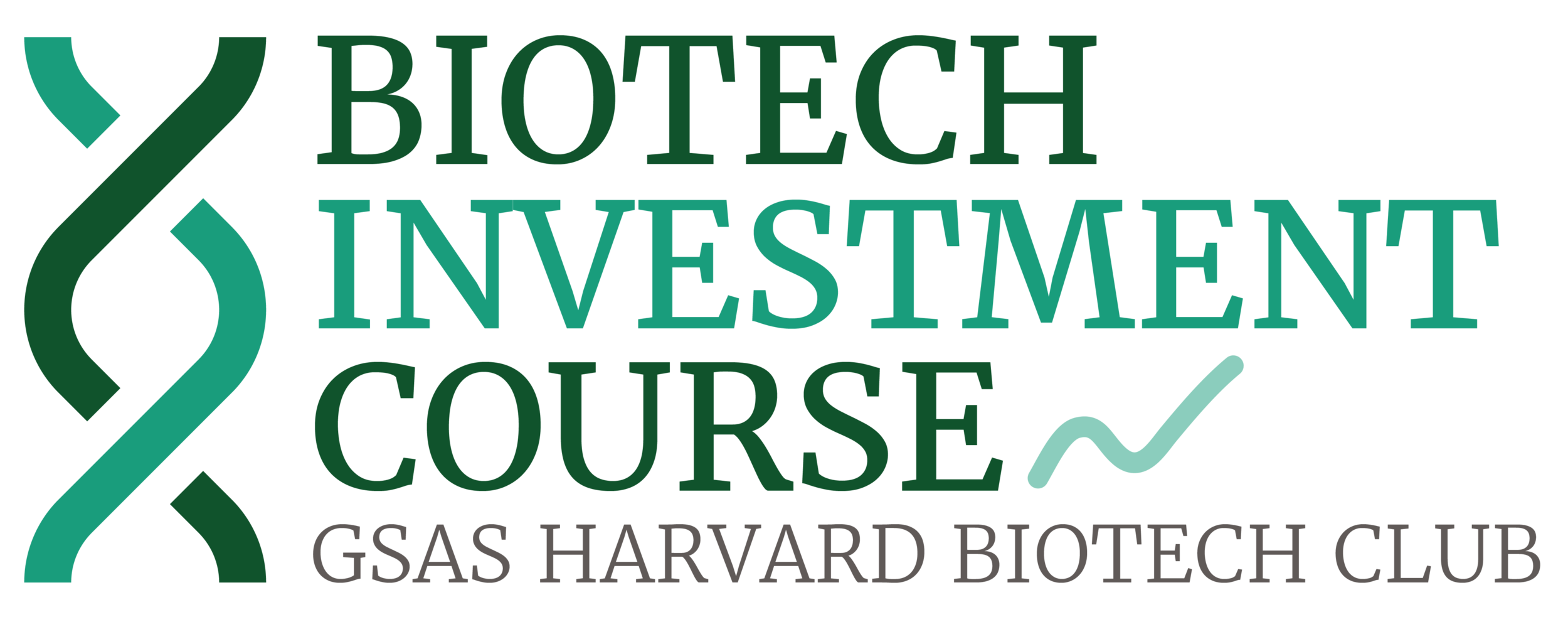
BIOTECH INVESTMENT COURSE
Learn about investing in publicly-traded biotech companies
Life science companies aren't the easiest to understand. Join us to learn how to invest wisely! This course by the HBC aims to impart the necessary skills to enable smart investment decisions based on sound scientific and financial analysis using publicly available resources.
Over two months, 40 selected participants will learn the ins and outs of analyzing life science companies from a lineup of esteemed speakers, while concurrently working in teams of 5 to produce and deliver a final investment pitch to a panel of professional biotech investors.
Curriculum
Session 1: Introduction to Biotech Investing
Course syllabus and expectations
First principles of R&D - The role of due diligence
The C-suite, Board of Directors and Scientific Advisory Board
What to look for in good (and bad) management
Conference calls, earnings calls and biotech equity research analysts/reports
Session 2: Financial Analysis and Resources
Common ways that biotechs raise capital: equity (VCs, angel investing, IPO, PIPEs, Direct Offerings, Rights Offerings, etc.) and debt (loans, bonds, etc.)
Company financial resources: Bloomberg, Yahoo Finance, Crunchbase, etc.
Overview of types of SEC filings: 10-K, 10-Q, 8-K, S-1, etc.
Basics of Financial Statements: Balance Sheet, Cash Flow, Income Statement, Key Ratio Analysis
Calculating cash and burn rate
Session 3: Drug Development & Regulation
Overview of clinical research phases and the IND-filing process
Clinical trial design, evaluation, and considerations (such as adverse events and safety profiles)
Pathways to FDA approval (priority review, fast track, breakthrough, orphan designation, etc)
Overview of the US reimbursement system as a hurdle to pricing and market uptake
Case studies
Session 4: Market Evaluation and Commercial Risk
Forecasting market size and share and estimating drug revenues
Overview of intellectual property: patent law and know-how
Landscape analysis: comparing competitors and SWOT analysis
Session 5: Company Valuation Methods
Developing a Thesis
How to weigh the various types of risk
Various valuation methods: DCF, comparables, EV/EBITDA, P/E, etc
Red flags and positive indicators
Session 6: Biotech Stock Catalysts
Understanding what biotech catalyst events are
Understand why catalyst events are important and how they can affect long- and short-term stock price changes
Session 7: Open Community Keynote Lecture
Ricky Sun, PhD - Partner at Bain Capital Life Sciences
Session 8: Investment Pitch Competition
Details
Timeline: Two-month program, held weekly in the evenings every spring semester.
Format: in-person; space limited to 40 people.
Open to: Harvard-affiliated students and trainees
Application Deadline: February 23, 2025
For any questions or clarifications, contact the HBC Investment Course team at hbc.investmentcourse@gmail.com
Course Information & Policies
Attendance
There will be 7 sessions of this course, followed by an eighth session for group presentations.
You will receive a certificate at the conclusion of the course, provided that you attend all the instructive sessions AND do the group presentation at the final session. We encourage you to attend all the sessions, as they unlikely contain redundant content.
Stock Recommendation Assignment
Participants will be divided into teams of 5, and will be expected to deliver a 15 minute pitch followed by a 5-10 minute Q&A to a panel of judges at the 8th and final session of the course.
You are free to choose the company you wish to study. The only requirements are that the company has to be working on a therapeutic(s) and publicly-traded on a stock exchange in the United States. While we do not require a fixed pitch structure, it should at least include the topics covered in the course, namely:
Management (Board of Directors, Scientific Advisory Board, etc.)
Scientific foundation and clinical trial data (if any)
Financial analysis
Landscape analysis (patent strength, competitors in the market, etc.)


